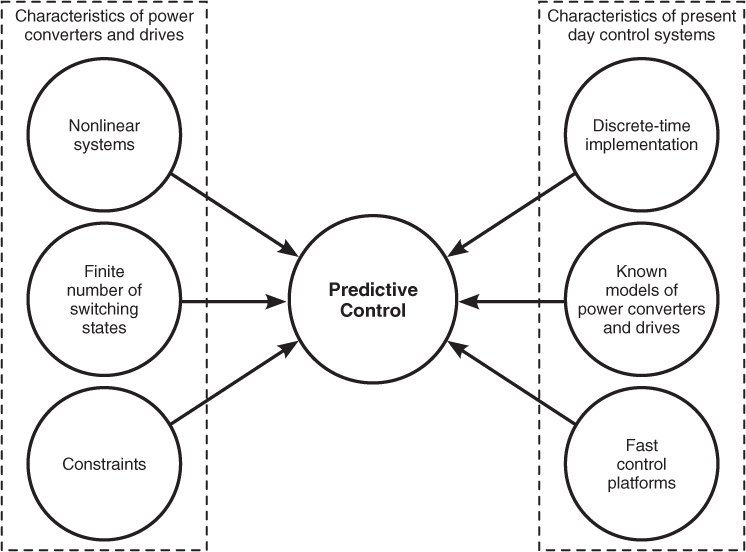1.4 Why Predictive Control is Particularly Suited for Power Electronics
Considering the increasing demands in performance and efficiency of power converters and drives, the development of new control schemes must take into account the real nature of these kinds of systems. Power converters and drives are nonlinear systems of a hybrid nature, including linear and nonlinear parts and a finite number of switching devices. The input signals for power electronic devices are discrete signals that command the turn-on and turn-off transitions of each device. Several constraints and restrictions need to be considered by the control, some of which are inherent to the system, like the maximum output voltage of the inverter, while others are imposed for security reasons, like current limitations to protect the converter and its loads.
Nowadays, practically all control strategies are implemented in digital control platforms running at discrete time steps. Design of any control system must take into account the model of the plant for ajusting the controller parameters, which in the case of power converters and drives is well known. As described in the previous section, control platforms offer an increasing computational capability and more calculation-demanding control algorithms are feasible today. This is the case for predictive control.
All these characteristics of the power converters and drives, as well as the characteristics of the control platforms used to form the control, converge in a natural way to the application of model predictive control, as summarized in Figure 1.8. The purpose of this book is to highlight the characteristics that lead to simple control schemes that possess a high potential for the control of power converters and drives.
Figure 1.8 Characteristics of power converters and drives that make predictive control a natural solution

